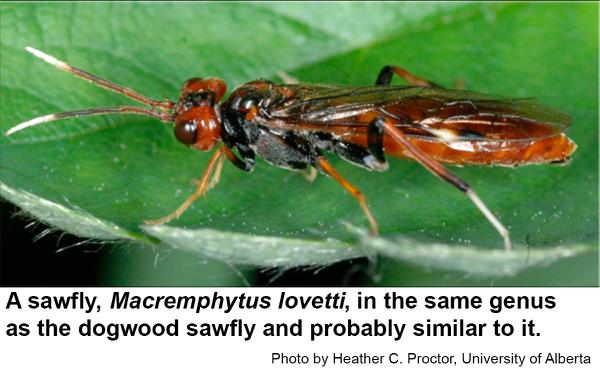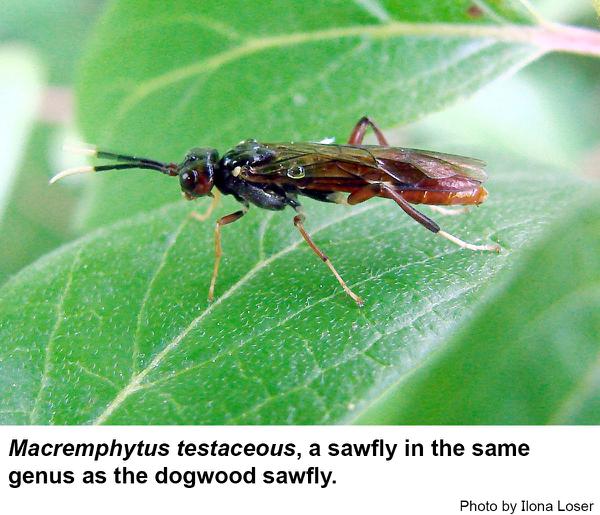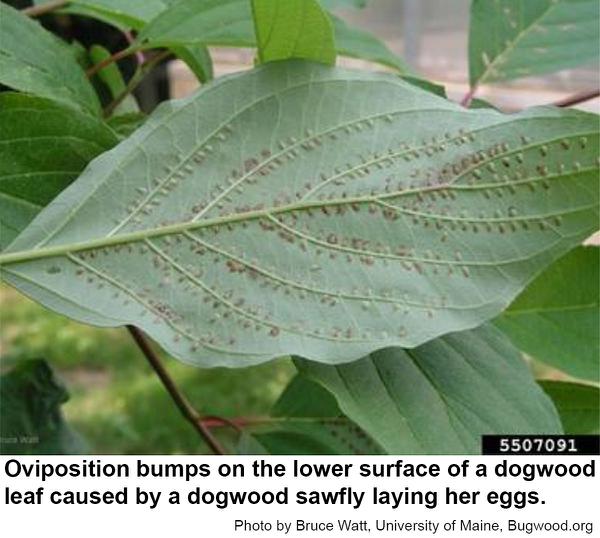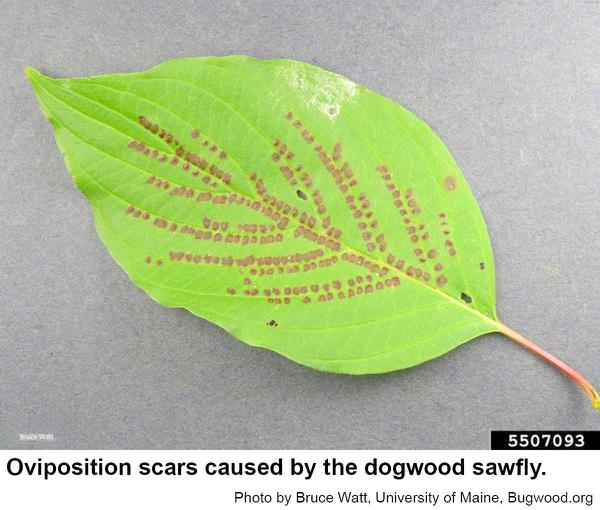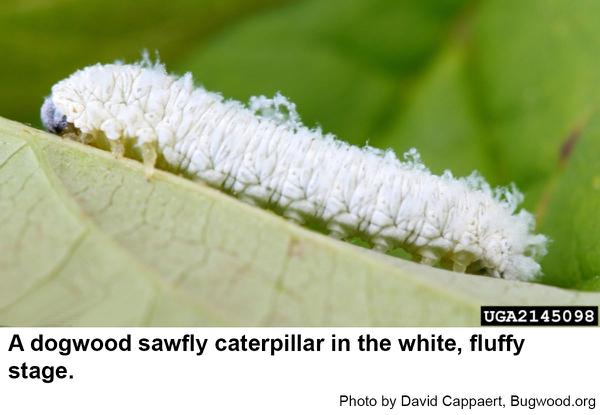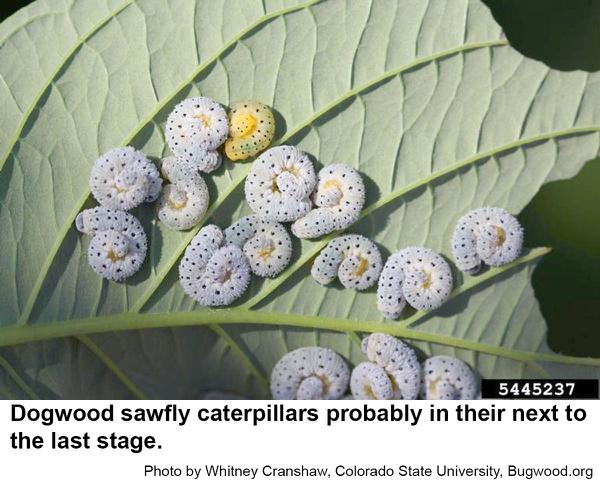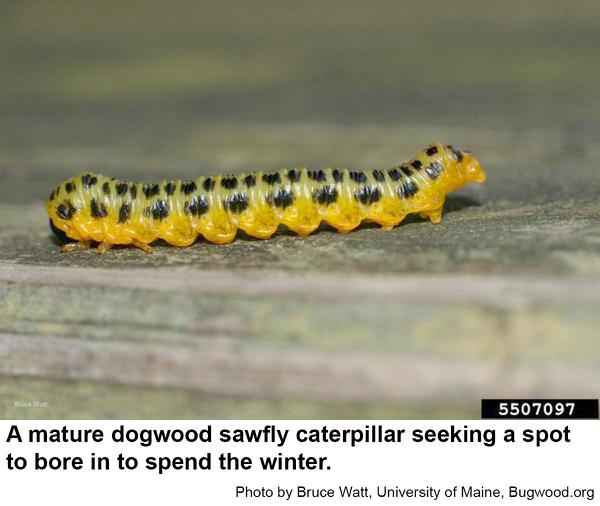Description and Biology
Dogwood sawflies, Macremphytus tarsatus, are slender, shiny, black, wasp-like insects. Dogwood sawflies emerge from May to July. Females insert up to 100 eggs in a leaf using a “saw-like” ovipositor. Each egg causes a small bump that eventually turns brown. Immature dogwood sawflies are caterpillars that change colors, textures, and appearances several times during their development. The second larval stage is covered in a white waxy covering and the last larval instar is yellow and black. Young caterpillars skeletonize leaves. Older caterpillars eat everything but the midrib. They eventually become pale cream color with black spots and grow to about an inch long at which time they are yellow and black. Mature caterpillars bore into decaying or soft wood and form cells in logs, landscape timbers, and even lawn furniture. We have one generation per year in North Carolina.
Host Plants
Various species of dogwoods seem to be the only hosts for the dogwood sawfly.
Residential Recommendations
The dogwood sawfly may cause considerable defoliation because they feed in groups. Small caterpillars can be dislodged by shaking and then trampled under foot. If chemical control is warranted because of excessive defoliation, insecticidal soaps and horticultural oils are effective as long as the dogwood sawfly caterpillars are less than an inch long. Older caterpillars are very tough! Most of the other insecticides labeled for residential landscape use also provide adequate control.
References
- Dogwood Sawfly. Jesse, L. 2009. Iowa State University Extension and Outreach, Horticulture and Home Pest News.
- Dogwood sawfly, Macremphytus tarsatus, Order Hymenoptera, Family Tenthredinidae; common sawflies, Native pest. Krischik, V. and J. Davidson. 2013. IPM of Midwest Landscapes, Pests of Trees and Shrubs.
- Extension Plant Pathology Publications and Factsheets
- Horticultural Science Publications
- North Carolina Agricultural Chemicals Manual
For assistance with a specific problem, contact your local Cooperative Extension Center.
This Factsheet has not been peer reviewed.
Publication date: March 18, 2017
Reviewed/Revised: Sept. 16, 2019
Recommendations for the use of agricultural chemicals are included in this publication as a convenience to the reader. The use of brand names and any mention or listing of commercial products or services in this publication does not imply endorsement by NC State University or N.C. A&T State University nor discrimination against similar products or services not mentioned. Individuals who use agricultural chemicals are responsible for ensuring that the intended use complies with current regulations and conforms to the product label. Be sure to obtain current information about usage regulations and examine a current product label before applying any chemical. For assistance, contact your local N.C. Cooperative Extension county center.
N.C. Cooperative Extension prohibits discrimination and harassment regardless of age, color, disability, family and marital status, gender identity, national origin, political beliefs, race, religion, sex (including pregnancy), sexual orientation and veteran status.

